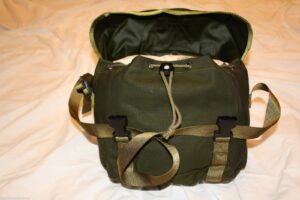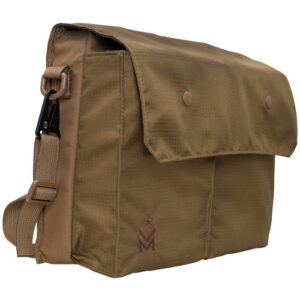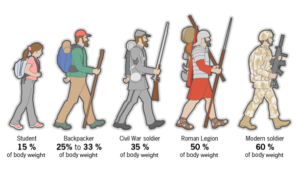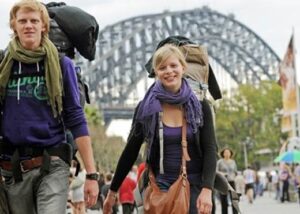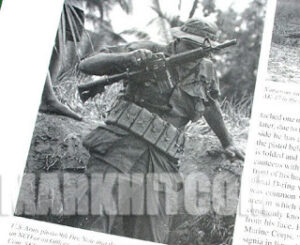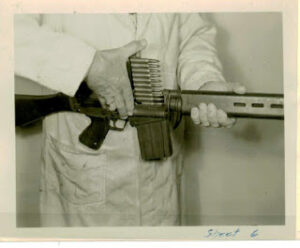Sam’s Van is an idea from a friend of mine from Tennessee. When he was in his late twenties he proposed that a person should only have as many possessions as could be transported as a single van load.
For a variety of reasons, I can no longer meet this ideal, but it is a useful concept to help you declutter and reorganize your environment.
There are some interesting websites about minimizing your possessions and these can provide useful inspiration. However, Sam’s Van is about optimizing what you have rather than minimizing it.
Recently I began to consider what I have in the kitchen.
This caused me to look at some lists of “essential” items of kitchenware, which did give me something of a chuckle. I quite like cooking so my kitchen contains some items I would not put on a basic start-up list.
The list below is a combination of what I have in my kitchen and items that appear on lists of essentials. If you are equipping a new kitchen or wish to declutter an old one, this list and my comments may be of help.
Plates, Bowls and Cutlery
At least four of each, with six preferable. The more you have, the less often you will have to wash up!
Bowls end up being used for microwaving veg and other uses so a few extra of these is prudent.
I found that teaspoons tended to be in short supply too so I brought a bundle more and released them into the drawer in the hope that they will breed.
Mugs
Extra mugs save on the washing up and let you be sociable.
Eight is a good number if you are on your own, twelve if a couple.
Mugs also get used as little mixing bowls for making sauces, instant gravy, mustard or similar.
Beer and Wine Glasses
You do not want to drink your beer and wine from mugs.
Pots and Pans
You will need two, maybe three, saucepans of a suitable size for your requirements. For example, if you are mainly cooking for yourself, a pot of about a litre size is going to be the most useful.
Make sure all the pots have lids and that they are of a configuration that you can use the lid to drain the pot.
Avoid steam-release vent knobs unless you like scalded fingers.
Wooden Utensils
You will need some spoons to stir your cooking and spatulas to flip frying or grilling food over. Since some of your cookware will be non-stick it is prudent to get non-metallic items.
If the local pound store does sets of wooden utensils, you can soon acquire half a dozen or more items of varying shapes and applications.
Frying Pan
If you are getting only one, get a non-stick one of reasonable width.
A frying pan can also be used for making and reducing sauces.
Mixing Bowls
A couple of bowls are useful for mixing stuff in, serving fruit or popcorn in and so on.
If you are smart you will select some that you can use in the microwave (and halogen oven). Some glass/pyrex bowls often have measuring graduations too.
Measuring Jug
I measure out the quantity of rice or pasta that I intend to cook using volume, so a measuring jug proves very handy. I also use it to fill the coffee maker with water.
It is used so often that it seldom leaves the draining board.
Chinese Cleaver
Something like 90% of cutting jobs in my kitchen are done by my Chinese cleaver. If I am using another knife it generally means the cleaver is in the wash.
Unlike the western cleaver, the Chinese model has a full bevel and a relatively thin blade. This type is sometimes called a vegetable cleaver but you can use it on anything you might wish to eat. As well as chopping, it can also be used for slicing, dicing and all sorts of fine cutting too.
Best place to get one is a Chinese supermarket, preferably one in a Chinatown district.
I have yet to cook anything the Chinese cleaver could not cut. Should such a situation occur, I have a Buck Ax in the kitchen too. The back of this gets uses as a hammer to break up frozen veg.
Chopping Boards or Mats
Have at least one, and have it of a type that is easily washable. Use it to cut your veg before your move onto the meat or fish or use a different one for each.
If you want to have different boards for meat, vegetables and bread have them different colours.
Paring Knife/Knife Block
The other knife I use a lot is a “bird’s beak” paring knife. These are also called “shaping knives” or “peeling knives”.
This can be used for most of the jobs that a cleaver is not really suited for. Mine came with a knife block set. Its hooked blade is very useful for opening packaging.
I brought the knife block set to stop a certain “guest” abusing my boning knife.
Scissors
Modern packaging means that the scissors get used a lot too. I ended up putting a screw hook to hang them from inside the kitchen drawer so I could easily locate them.
Some lists of kitchen equipment have kitchen shears, which are presumably used for food preparation. Never used or owned these. The scissors or cleaver should serve.
Bread Knife
Whether you need a bread knife will depend on how you buy your bread and how much bread you eat at home. I have one as part of the knife block set and it sees occasional use.
If you buy bread, have a cloth bread-bag to keep it fresh.
Carving Knife
There is one in the knife block set. Before I had that I usually used the cleaver.
Butcher’s Steel and Ceramic Rods
No point in buying a cleaver and knives if you cannot keep them in working condition.
I have a pair of ceramic sharpening rods and a butcher’s steel in my kitchen, ready to be used as needed.
Filleting and Boning Knives
I don’t have a filleting knife, and I find I have seldom used my boning knife.
Good ones tend to be expensive, so do not buy unless you expect to get lots of use out of them.
Whisk
Whether you need a whisk depends on your cooking abilities and style. If you have no idea on how to make a sauce or batter you do not need them.
I like the “magic” whisk type that look like they have a spring bent into a horseshoe-shape. I brought two or three of these to save on washing up.
Never felt the need for an electric mixer or blender.
Skimmer
This is a Chinese item like a cross between a ladle and a metal net. It is used to fish stuff out of boiling water or deep fat.
I have seldom used it.
Electric Kettle
You could get by with a saucepan if you have one clean but an electric kettle is worth having. Open flames and being half awake in the morning are to be avoided if possible.
Get the sort of kettle that will only boil the amount of water you need.
Toaster
The usefulness of a toaster depends on whether you have bread in the house. I had a friend staying with me who would buy bread for sandwiches so the toaster saw some use.
Since he has gone it has not been used much.
Garlic Press
I have not seen mine in over a decade.
When I need crushed garlic I simply flatten it between the cleaver blade and chopping board, which also makes it easier to peel. Then slice or mince further with cleaver as necessary.
Potato Masher
Use a fork unless you make a lot of mash.
Pizza Cutter
Just use a table knife.
Ice Cream Scoop
I seem to have inherited one! If you do not have one, simply use a spoon.
Can Opener
I don’t eat a lot of canned food.
When I needed something like canned tomatoes for a chilli con carne, I’d use the can opener on a penknife. A spare penknife is a useful thing to keep in the kitchen drawer.
A friend who was staying with me ate more canned food, so we brought a turnkey-type can opener from the pound-store.
Unless you are disabled or work in an industrial kitchen you do not need an electric can-opener. They are a waste of energy and money.
Bottle Opener/Corkscrew
You should have these. The penknife stands in reserve.
Pepper Grinder
Unsurprisingly, for grinding peppercorns.
Vegetable Peeler
I’m sure I have one of these somewhere but have not used it in years. Often you can simply scrape or wash fresh vegetables instead or use your paring knife.
Grater
I like grated cheese on my spaghetti, so I brought a grater from the pound-store. You can get by with cutting the cheese with a knife so this is an optional item rather than an essential.
Lemon Juicer
Lemon juice for pancakes gets brought ready squeezed. If I have to get juice from a fresh lemon, lime or orange I squeeze them manually or mash them with a spoon.
Pressure Cooker
I probably do not use this as often as I should.
It gets forgotten in the cupboard so I will try keeping it on a shelf instead. I eat a lot of rice and pasta and pressure cooking these does not offer much of a real time saving and the pot is large for the volumes that I cook. The pressure cooker is good for cooking rice or pasta with other ingredients.
Frozen veg is quicker and simpler in the microwave.
The pressure cooker does get used to make the Ham in Cola that I usually cook near Christmas.
Wok
I’m told that most people buy a wok, use it for a few meals then forget about it. I have been using mine for several decades for a variety of meals.
There are lots of things you can use a wok for other than stir-fries. If you do stir-fry, however, buy a chuan to move the food around with. This resembles a cross between a spatula and a shovel.
You will also need a bamboo brush to clean your wok with.
It is worth having a lid for your wok too. My lid got damaged in a move several decades ago and I have managed without, however.
You can buy a wok set in a nice box from many supermarkets. For a fraction of the price you can pick one up unboxed from a Chinese supermarket. Buy a cleaver, brush and chuan while you are there.
Don’t bother with non-stick or stainless steel woks. Get a carbon steel wok of 13-14 inches and season it.
Microwave
I use my microwave a lot but I really should use it more creatively. Mainly I use it to cook frozen vegetables. A bowl of frozen veg can be cooked in just a few minutes. I also use it to make polenta or mug brownies.
The microwave is used for defrosting too but it is less wasteful to let items thaw naturally in the fridge overnight.
George Foreman Grill
The grill in my oven is very inefficient, and the one in the microwave/grill is not that great either so I brought a George Forman grill.
I will admit I have used my wok and frying pan much less since I brought my George Foreman. Bear in mind it cooks both sides of the food at once so will cook quicker than a conventional grill.
Halogen Oven
This is a relatively recent addition to my kitchen and I probably use it more than any of the other cooking devices.
Make sure that your ovenproof bowls, baking pans and casseroles are of a suitable size and shape for use in the halogen oven.
Tongs
I don’t think I have ever owned kitchen tongs. The closest thing I have to them are cooking chopsticks, which I seldom use. A wooden spatula serves for flipping food.
This has changed with my use of the halogen oven. You need tongs (or chopsticks) to reach down into a hot halogen oven to turn or pick-up food. I also have tongs designed to pick up the racks or trays in a halogen oven.
Porridge Pan
If you like porridge, a small non-stick milk pan is worth having. It lets you make breakfast if the pans from the night before have not yet been washed.
I have a spurtle too, but you can use the handle of a wooden spoon instead.
Ladle
I have a couple of these but seldom use them. I do use one as a measure when pouring pancake batter.
You can also use some as very small saucepans for melting a few grams of butter, for example.
I would not class a ladle as an essential. I’d not throw my away but I’d not rush out to buy them if I didn’t have them.
Casserole Dish
Whether you want a casserole dish will depend on your cooking skills and inclinations.
It is a good idea to select one that can also be used in the microwave and halogen oven. I fill mine with tortilla chips and melt grated cheese over them.
A nice looking casserole dish can also be used as a serving dish too.
Measuring Spoons and Measuring Cups
I don’t own any of these and have managed without them. The scales, measuring jug and eating spoons get used instead.
I did, eventually, buy a couple of sets. Many recipes on the internet use volumes rather than weighing.
I also try to measure out high-calorie foods rather than serving myself too much.
Scales
Depending on your cooking style, these can be handy to have.
Timer
Handy to have, particularly if you are easily distracted or not that experienced at cooking.
Colander
Generally, I use the saucepan lids to drain pots. A colander can be useful for some other tasks such as washing fruit or veg. Can also be used as a well ventilated fruit bowl.
Sieve
I seldom use mine but it is worth having one. A sieve can be used to drain stuff that would go through a colander. It can also be used to sift flour or icing sugar.
Baking Tin
If you want to use your oven, you will need at least one ware that can be used in it. You can use your casserole dish and get by using foil instead of a baking sheet. A non-stick backing tin a few inches deep can be used to make pies or toad in the hole.
According to at least one website a 9 x 13" dish will be the most useful. A square or round dish 8 to 9" across is more useful if there is just one or two of you. Round dishes are more useful for use in a halogen oven.
You will need a non-metallic cake slice (above photo) or knife to use with your non-stick containers.
Tupplewares
A few plastic boxes can prove handy.
Oven Glove and Tea Towels
My girlfriend’s sister took a dislike to my oven glove and it disappeared. Tea towels work just as well and are more versatile.
Towels are great for swatting houseflies from the air to keep your kitchen a “no-fly zone”. (Fitting fly-screen to the windows is a really cost-effective investment!)
Food Processor, Blender, Liquidizer
Personally I have managed to cook for several decades without owning any of these so I would dispute that they are “essential”.




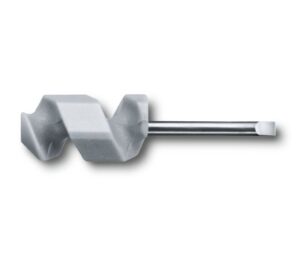
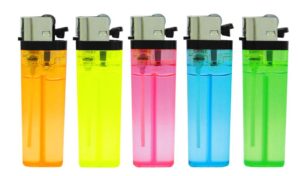
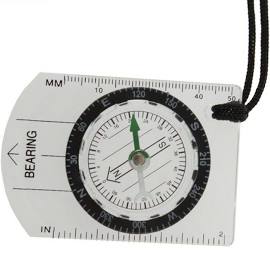


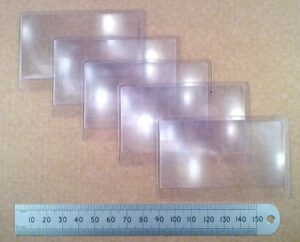
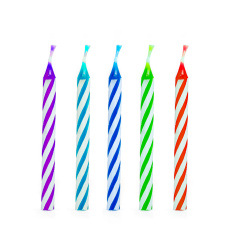




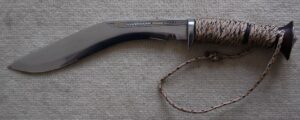


 “Among my most valued possessions is a tiny Colclesser tomahawk, of 8-ounce head and 2½ inch bitt, which, with hickory handle and home-made sheath, weighs only three-quarters of a pound. I seldom go anywhere in the woods (unless in marching order with a heavier axe) without this little trick.
“Among my most valued possessions is a tiny Colclesser tomahawk, of 8-ounce head and 2½ inch bitt, which, with hickory handle and home-made sheath, weighs only three-quarters of a pound. I seldom go anywhere in the woods (unless in marching order with a heavier axe) without this little trick.








